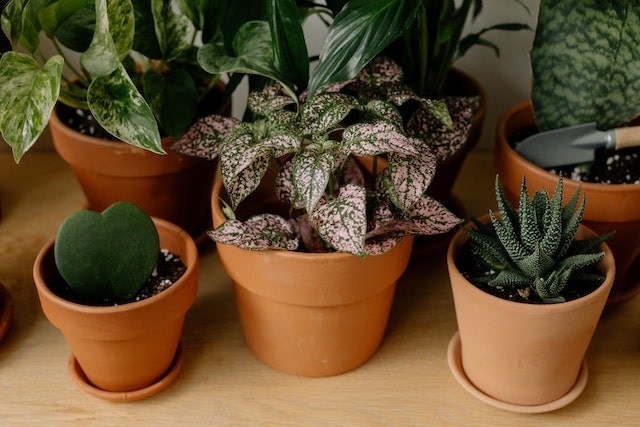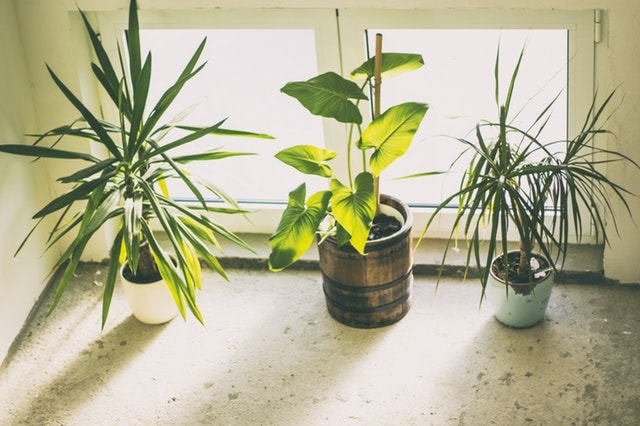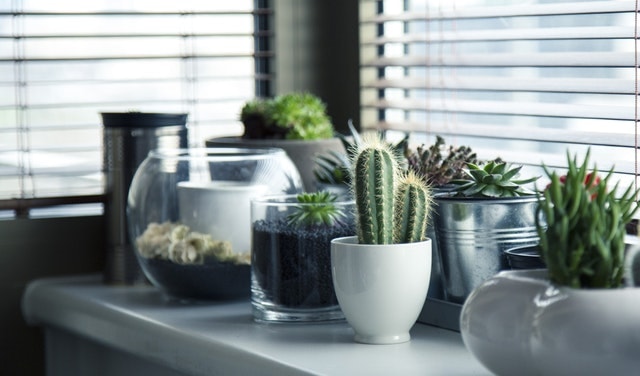The Polka dot plant comes with the scientific name of Hypoestes phyllostachya, also known as the freckle face plant. This plant is an herbaceous perennial which includes variegated brightly colored leaves. Most commonly, you can see green foliage with pink, purple, red, or white variegation in this plant. You can grow this plant well in humid and warm conditions with partial shade or indirect bright light. These are much more hassle-free and easier to grow under appropriate conditions than other plants.
Polka dot plants have a moderate growth rate and, even when they mature, remain comparatively small. It is especially applicable when you grow these indoors as houseplants. Many people also treat polka dot plants as annuals when they are outside, as they are highly native to warm climates. Countries like Australia and tropical areas like Hawaii consider these plants invasive. It is a primary native habitat in Madagascar.

Different varieties of polka dot plants
You can find different types and colors of polka dot plants in the market. The colors are primarily for the leaves. Let us check out the different types of polka dot plants below.
- Carmina
It includes red and dark green colored leaves.
- Pink brocade
This type of plant has green leaves with dotted pink spots.
- Confetti
Confetti has green leaves with white, rose, burgundy, pink or red spots.
- Splash
It is a mixture of green leaves with splashes of reds, whites, or pinks.
- Hippo rose
This type of polka dot plant is painted with rose and comes with tiny red colored splattering with green leaves.
Factors Necessary for polka dot plant growth
Let us check out the factors below necessary to grow polka dot plants.
- Light
If you place the polka dot plants outdoors, put them under shade. Bright direct light can cause the variegation of the plant to fade. Indirect bright light from south or east-facing windows is ideal for it. It will make the leaf color vibrant and prevent the plant from making it slim. If you can plan the plant pot in the low lighting area, it will also fade in color and become leggy rapidly. You can also grow the plant indoors by using artificial full-spectrum lights.
- Soil
These plants prefer organically enriched soil with proper drainage. You can use an all-purpose potting organic mix for polka dot plants. Mix the soil in perlite or pumice to improve the soil drainage system. You can also use humus-enriched soil in neat or compost form, having a pH between 6.2 and 5.8. The plant needs the necessary and even moisture for proper growth. If you want a fuller and bushier look of the polka dot plant, you should plant 4 to 5 seedlings inside a pot of 4 inches.
- Water
It is necessary to keep the soil of the polka dot plants evenly moist. You can water your plant when you observe that half an inch of the soil at the top is completely dry. Remember to cut down the watering amount in winter and resume it again in spring when new growth starts appearing. Too much water can lead the root to rot. The only thing to remember while watering your beloved plants is that they will quickly dry out if the container is tiny.
Too much soggy soil can also be the reason for bacterial and fungal infection formation. You can water the polka dot plants twice weekly based on how much sunlight you get and how dry your abode is. To check if the soil needs water, press your finger into the soil for half an inch. If the soil is dry and the plant is limp, it will need some drink.
- Humidity and Temperature
Place the polka dot plant pot in a warm place with a minimum of 50% humidity. You can also keep it in your bathroom if it has a window. Generally, these plants prefer a temperature of 60 to 75 degrees Fahrenheit; when winter has passed, you can put them outside in the spring. You can boost the humidity of your area by building a humidity tray, grouping the plants, and misting it several times in one day. In this way, the plants can humidify and transpire one another. Polka dot plants are unsuitable for chilly and drafty areas.
- Fertilizer
It is always best to feed the container plants with organic fertilizer once every month during their growing season. If you put the plant directly in the ground, always mix organic compost in the soil before every spring. You can use a diluted fertilizer for the houseplants for this purpose. If you observe that the leaf tips are becoming crispy and brown, then it means too much fertilizer is used in the plant. In this case, you must flush the soil with distilled water, remove the affected portion of the leaf and then leave it as it is. Do not worry, as it will again start growing fresh from there.
- Pruning
You can pinch or cut the two leaves at the top on every stem each week to keep your polka dot plant from getting leggy and promoting bushier growth. You can clip the plants with sharp and clean shears when they start to flower. It is vital to do this as the plant enters a dormant stage or dies off once it has accomplished the flowering process. If you can regularly pinch back the polka dot plant, it will have a bushier growth. You should also save the stem tips you removed while pruning and later use them to propagate new plants.
- Natural habitat
Polka dots are the native plants of Madagascar, although other family members of the Acanthaceae family primarily originate from Southeast Asia and South Africa. Polka dot plants in their natural habitat grow in tropical humid forest regions in a shrubby way. These plants are also natural habitats in Costa Rica and India. In Costa Rica, the plant is shown to cause some trouble as the butterflies cannot figure out how to lay eggs on their leaves.
- Planting
The drainage system is the most important aspect to consider while planting a polka dot plant. Any planter with a bottom drainage hole will miraculously work for this plant. Consider a plastic container instead of terracotta if you do not frequently water your plants.
Always keep the polka dot plants in a small container to prevent your plant from growing leggy. It will restrict the root growth and become root bound. If you want a wild-growing polka dot plant, then it is better to use a giant container. In the summer, you can also place the large container outside in indirect light.
How to propagate polka dot plants?
- Through stem cutting
It is possible to propagate polka dot plants through stem cutting. Propagation of these plants is best and most successful in the summer or spring. You will require a small and clean jar or glass, stem cutting rooted in water, and sharp scissors or pruners for propagation.
- With the help of sterilized and sharp pruners or scissors, cut a section of the stem that should be at least 2 inches long. Cut the stem below a node from which the roots are growing. You must also cut 2 healthy leaves close to the top and the stem. You can also cut off the leaves which are present at the bottom.
- You can now place the stem cutting inside the water container and put the entire set in a warm corner that will receive indirect sunlight.
- You must replace the dirty water every two weeks to prevent algae formation. Within a week, you can see roots coming out.
- Once the roots have become 1 inch long, you can shift the cutting in the pot with new soil.
- Through seeds
- You can also propagate a new polka dot plant with the seeds’ help in the ways below.
- You can sow the plant seeds on moist, warm soil in early spring.
- Place the entire setup in a sunny location but under indirect sunlight.
- You can see the seeds sprouting within a few days.
- Once the seedling becomes several inches long, probably within a week or two, you can transfer it to a large vessel or plant it outside.
- But remember, only keep your plants outside when the threat of frost is over in the winter.
How do you pot and re-pot the polka dot plants?
The ideal time to pot or re-pot a polka dot plant is during the spring when the winter becomes dormant or is entirely gone. Always check for pot-bound plants. The best way to recognize pot-bound polka dot plants is when roots start coming from the container’s drainage holes. The pot where you will transfer the plant should be 2 inches deeper and wider than the old one. Try not to place the plant in a terracotta pot as they wick away the moisture quickly and can cause rapid drying out of your green baby.
Always bring the outdoor plants inside your home before the night temperatures drop below 60 degrees in the early fall or late summer. You can keep the plant outside again when the night temperatures rise above 60 degrees or in the upcoming spring. Polka dot plants get affected by pests like whiteflies, mealybugs, and aphids. The plant is also associated with common diseases like leaf spot diseases, powdery mildew, and root rot. The most apparent signs of diseases or infections include damaged or discolored foliage and insects feeding or crawling on stems and leaves.
How do polka dot plants bloom?
Most people prevent polka dot plants from blooming as they will go dormant after flowering. Thus, if you want the plant to live longer, remove the flower spike while it forms. The flower of polka dot plants usually blooms in the early fall or late summer, when the days start to shorten. The polka dot plants usually bloom with the help of a small spike with tiny purple or pink flowers. They do not have any aroma.
What are the problems that you can face with polka dot plants?
Polka dot plants can also get affected by similar problems that most indoor plants face. Some of them are as follows.
- Leaves slowly fading their colors
Fading colors of the leaves are primarily due to exposure to too little or too much sun. These plants require indirect and bright light to maintain their natural color. But never place them under direct and hot sunlight as it can cause variegation and color fading.
- Leaves dropping off or becoming yellow
Overwatering of the plant can cause leaves to drop or even become yellow. If you observe any leaves turn yellow, decrease the water amount you are giving to the plant. Also, ensure you use a good drainage pot and excellent-quality soil.
How safe are polka dot plants for pets?
Polka dot plants are not considered toxic by ASPCA, but they can still cause diarrhea and vomiting in pets like cats and dogs, whoever consumes them. Thus, it can create similar reactions in human beings. Children can be attracted to it due to its candy-colored leaves and unknowingly consume it. So, the best way to grow polka dot plants in your house is to place them in a corner that will be out of reach for your children or pets. If you are growing the polka dot plants inside your house, there is a high chance of seeds dropping into nearby pots. It could endanger the lives of less vigorous plant species.
Conclusion
It is evident from above that caring for polka dot plants is easy and hassle-free. These plants add color to your house or space and can allure your mind. So a polka dot plant is the best option if you like gorgeous colors.
MORE POSTS:



